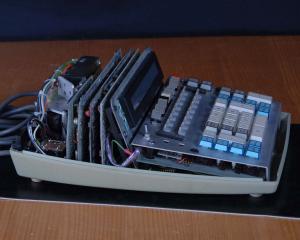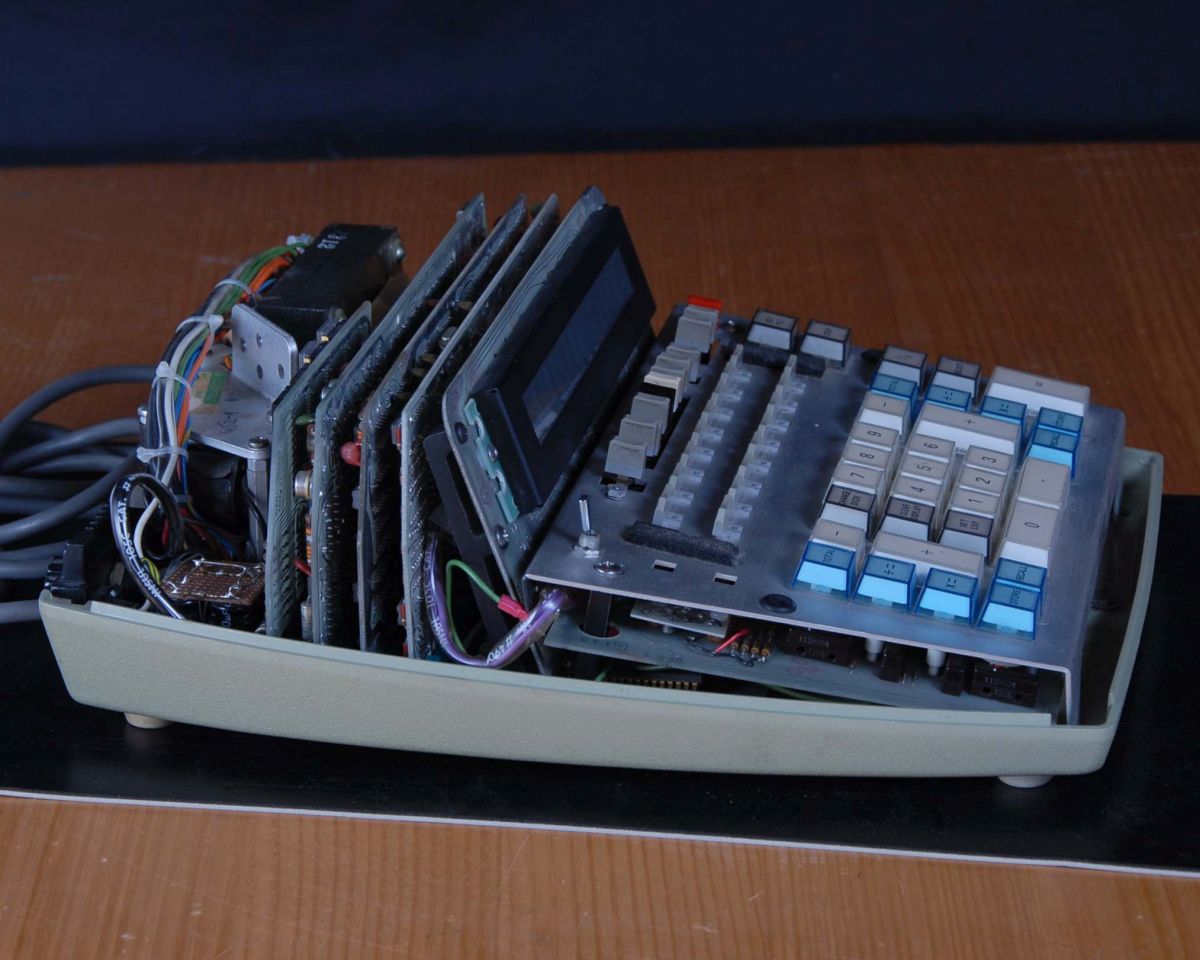Wang 452 Technology
Electronics
Small- and Medium-scale IC logic circuits.
Architecture, Memory & Speed
- Microcoded architecture with hardware logic driven by 20-bit microcode word
- 16 digit Panaplex display, floating point or mantissa + exponent.
- Digits encoded as 4-bit BCD, digit processing over 4-bit internal busStatic RAM memory, 1k of 4-bit words using 16
- Intel first-generation 1101 256 x 1 static RAM ICs
- 4 MHz master clock, basic hardware execution cycle of 1.5 uS = 667k cycles/sec
Construction
The machine is constructed on 4 double-sided PCBs, these plug into an active backplane which holds the microcode ROMs. The circuit is constructed from a mixture of small scale integration gate-level IC and a number of medium scale integration ICs that provide computer building block functions such as register banks and address stacks. ICs of this type made sense when computers were constructed from individual parts but are obsolete and seem quaint today, when entire processors with RAM and flash EEPROM are available as 16 pin ICs.
One PCB holds a set of mask programmed ROMs. These ROMs hold keystroke sequences that implement higher mathematical functions such as statistical functions. A number of different 400 series models were available, each had different higher functions and this was achieved by fitting different personality ROMs. The ROMs were 512 x 8 and two or four were fitted according to model. The ROMs were custom fabricated for Wang by Electronic Arrays, an early developer of medium and large scale integration ICs.
The working RAM is 1k x 4 bits and uses Intel’s then-new 1101 static RAM chips. These are on the rear-most PCB, adjacent to the machine’s fan, and are probably the reason for the fan as they were notorious for hot running. Wang had major overheating problems with the Model 700 calculator and no doubt was keen to avoid the same problem.
The remaining two PCBs are sufficient to hold the basic logic engine. One board holds the ROM addressing, instruction decoding, microcode progran counter and jump stacks. The other holds the data latches, data paths and arithmetic/logic unit. It is interesting to compare the PCB and component count in the LOCI and the 452, these machines are just ten years apart and are quite similar in basic hardware capability.
The PCB backplane also holds the microcode ROMs. These are custom-made PMOS parts by Electronic Arrays with the unusual geometry of 512 x 10. Eight ICs are arranged to give 2k of 20-bit microcode words.
The power supply is transformer based with series pass regulation using voltage regulator ICs to produce +5v and +/- 12v. 250v is provided for the Panaplex display anodes.

